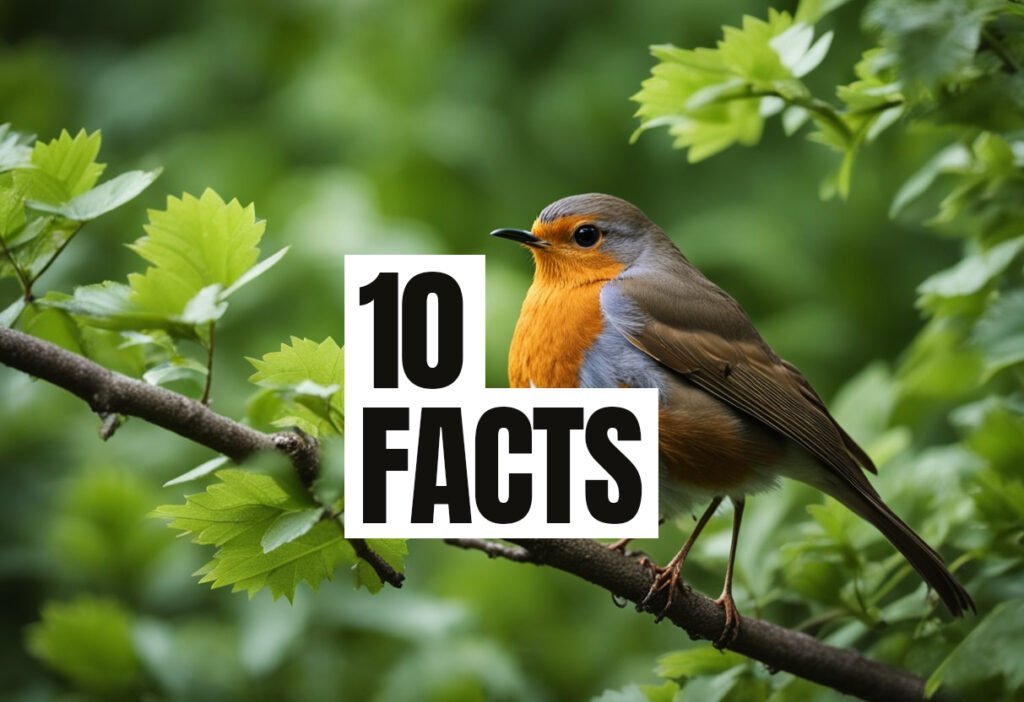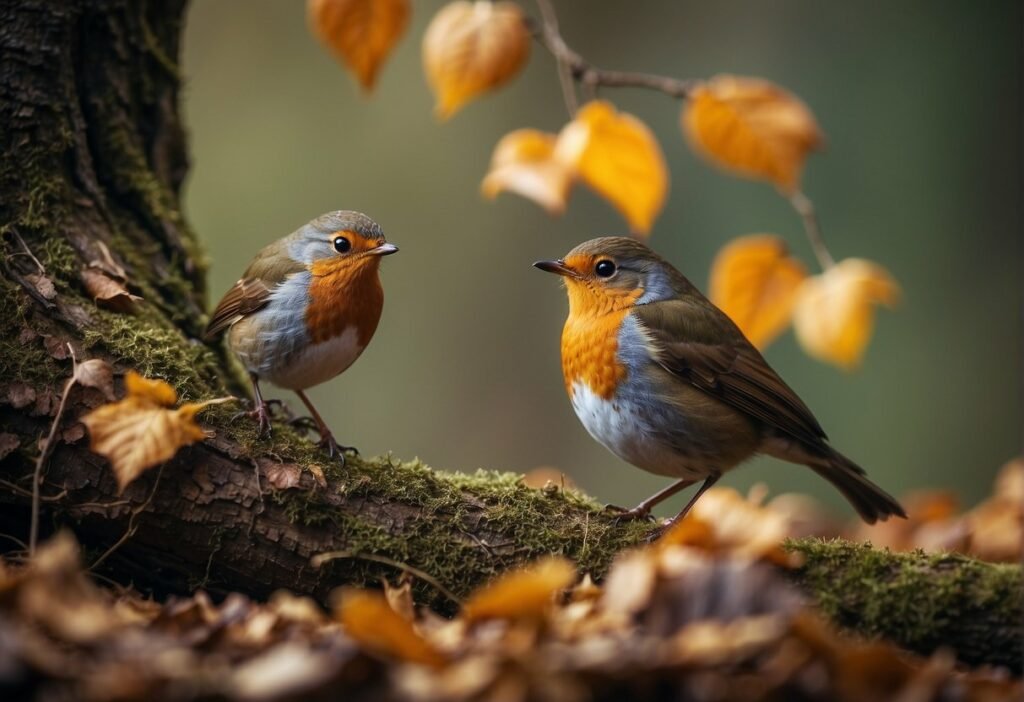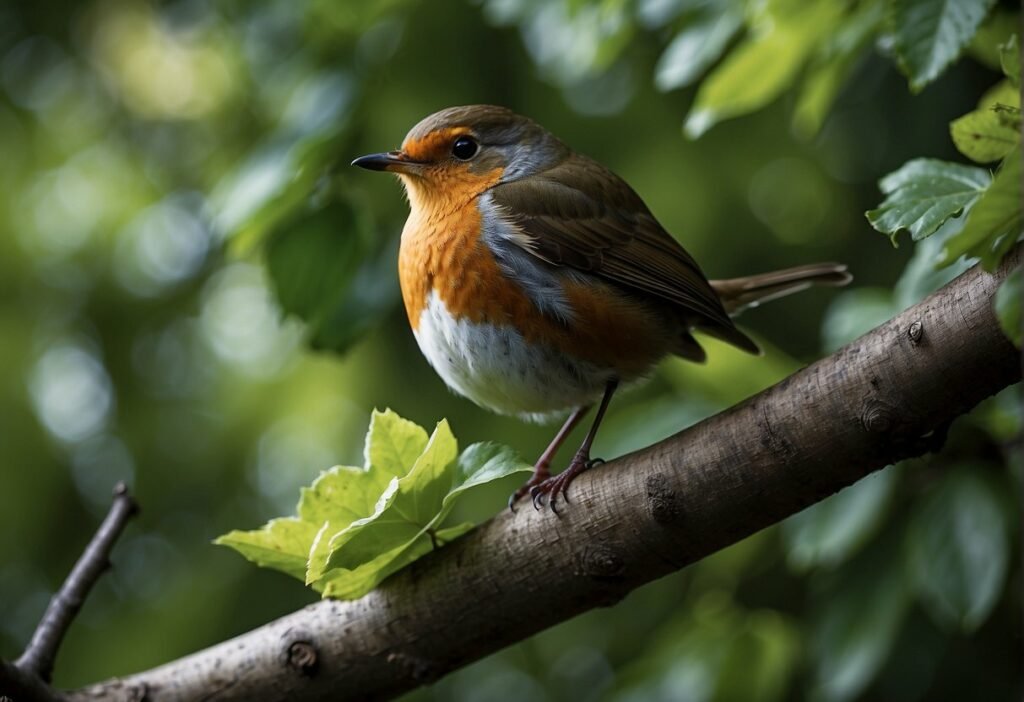Robins are a common sight in many parts of the world, known for their distinctive red breast and cheerful song. However, not all robins are the same. In fact, there are several different species of robin, each with its own unique characteristics and habitats.

One of the most well-known species of robin is the American robin (Turdus migratorius). This bird is found throughout much of North America, from Alaska to Mexico, and is known for its bright red breast and gray-brown back. American robins are often seen hopping along lawns and gardens, searching for worms and insects to eat.
Another species of robin is the European robin (Erithacus rubecula), which is found throughout much of Europe and parts of Asia. This bird is smaller than the American robin, with a reddish-orange breast and brownish-gray back. European robins are known for their melodious song and are often associated with Christmas in many parts of Europe.
Overall, understanding the different types of robins can help birdwatchers and nature enthusiasts appreciate the diversity of these beloved birds. Whether you’re watching an American robin hop through your backyard or listening to a European robin sing in a forest, there’s always something new to discover about these fascinating creatures.
Species and Distribution
| Species Name | Geographic Location | Distinguishing Features | Preferred Habitat | Diet |
|---|---|---|---|---|
| American Robin | North America | Reddish-orange breast, gray back, and white patches around the eyes | Woodlands, gardens, parks | Insects, fruits, berries |
| European Robin | Europe and parts of Asia | Bright orange face and breast, olive-brown back | Wooded areas, gardens, parks | Insects, worms, seeds, fruits |
| Rufous-backed Robin | Mexico and Southwestern USA | Rufous-red back, grayish-white underparts | Wooded canyons, riparian thickets | Fruits, berries, insects |
| Oriental Magpie-Robin | South and Southeast Asia | Black and white plumage, long tails | Urban gardens, forests | Insects, worms, small vertebrates |
| Indian Robin | Indian subcontinent | Dark grey or black body, white shoulder patches, reddish underparts (males) | Open scrub, urban areas | Insects, worms, berries |
| Japanese Robin | Japan, Korea, parts of Eastern Asia | Dark grey upperparts, orange breast and face | Dense, moist forests | Insects, spiders, seeds |
| Hooded Robin | Australia | Black and white plumage, males have black hood | Open woodland, scrubland | Insects, spiders, worms |
American Robin
The American Robin (Turdus migratorius) is a member of the thrush family (Turdidae) and is widely distributed throughout North America. They are commonly found in Canada and the United States and are known for their distinctive orange-red breast. American Robins primarily feed on worms and are commonly found in lawns, gardens, parks, and woodlands.
European Robin
The European Robin (Erithacus rubecula) is a small bird that is commonly found in Europe. They are known for their brownish-red breast and are often found in woodland, gardens, and hedgerows. European Robins primarily feed on worms, berries, and seeds.
Other Robin Species
There are several other species of robins that are found throughout the world, including the Rufous-backed Robin, White-throated Robin, Japanese Robin, and Scarlet Robin. The Rufous-backed Robin is found in western North America, while the White-throated Robin is found in western Asia and North Africa. The Japanese Robin is found in Japan and the Scarlet Robin is found in Australia and New Zealand.
Overall, robins are an important member of the passeriformes order and are widely distributed throughout the world. They play an important role in their respective ecosystems and are known for their distinctive appearance and feeding habits.
Physical Characteristics and Behavior
Appearance and Size
Robins are medium-sized songbirds that belong to the thrush family. They have a distinctive orange breast and a brownish-gray back, with white markings on their throat and belly. The male and female robins look similar, but the male’s plumage is slightly brighter. They have a wingspan of 12-16 inches and can grow up to 10 inches in length. The average weight of a robin is around 2.7 ounces.
Diet and Foraging
Robins have a varied diet that includes earthworms, berries, seeds, spiders, and beetles. They are known for their ability to run and stop quickly, which helps them catch insects on the ground. They also have a unique way of foraging for food – they tilt their head to one side and listen for the sound of earthworms moving underground. Once they locate their prey, they pull it out of the soil with their beak.
Reproduction and Lifespan
Robins are monogamous and usually mate for life. They build their nests out of twigs, grass, and mud, and line them with soft materials like feathers. The female lays 3-5 blue eggs, which she incubates for about two weeks. The young robins leave the nest after about two weeks and are able to fly after another week. Robins can live up to 14 years in the wild.
Social Behavior and Vocalization
Robins are social birds and often form flocks during the winter months. They are also known for their beautiful song, which consists of a series of melodious whistles and trills. Robins use their song to communicate with each other and to establish their territory. They are preyed upon by a variety of predators, including hawks, owls, and snakes.
Overall, robins are an important part of the ecosystem and play a vital role in controlling insect populations. Their distinctive appearance and beautiful song make them a favorite among birdwatchers and nature enthusiasts.
Frequently Asked Questions
What are the common species of robins found worldwide?
There are three common species of robins found worldwide: the American robin, the European robin, and the Japanese robin. The American robin is the most widespread species and is found throughout North America. The European robin is found throughout Europe, Asia, and North Africa. The Japanese robin is found throughout Japan and parts of Russia.
How can one distinguish between a juvenile and adult robin?
Juvenile robins have speckled breasts and lack the bright red breast feathers that are characteristic of adult robins. Juvenile robins also have brownish-gray feathers on their backs and wings, while adult robins have darker feathers with a bluish tint.
What are the identifying features of a female robin compared to a male?
Male and female robins look very similar, but there are a few distinguishing features. Male robins have brighter red breast feathers, while female robins have paler, more orange-colored breast feathers. Male robins also have slightly larger heads and more prominent black feathers on their wings.
Can you list the various robin species depicted in DC Comics?
In DC Comics, there are two main robin characters: Dick Grayson, who becomes Nightwing, and Tim Drake, who becomes Red Robin. There is also a female robin character named Stephanie Brown, who becomes Batgirl.
What are the distinct vocalizations of robins?
Robins have a variety of vocalizations, including a melodious song that is often heard in the early morning and a chattering call that is used to communicate with other robins. Male robins also have a territorial song that they use to defend their nesting territory.
What are the visual differences between baby robins and adults?
Baby robins, also known as fledglings, have a spiky, fluffy appearance and are generally brownish-gray in color. They have short tails and are not yet able to fly. Adult robins, on the other hand, have a sleeker appearance with longer tails and brighter plumage.




